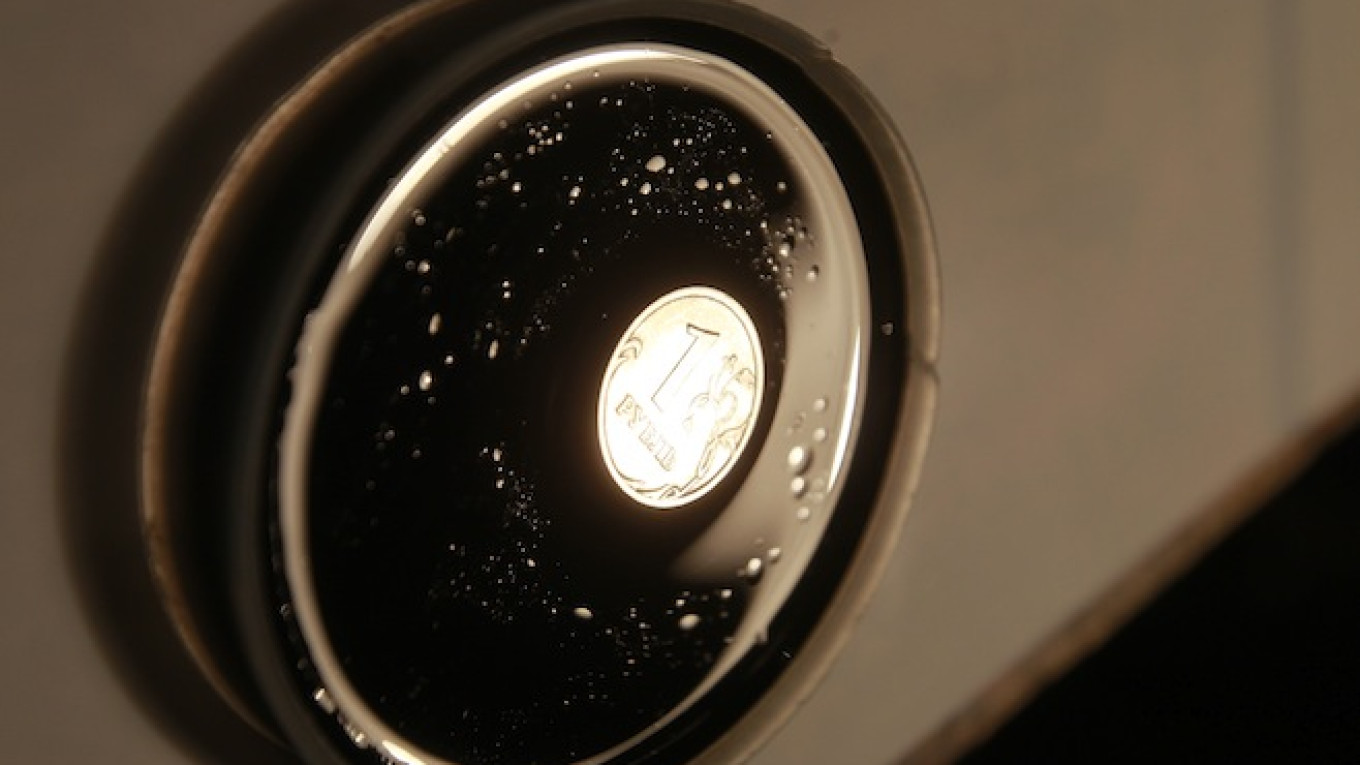The ruble strengthened sharply in thin trade on Friday, reaching a weekly gain of 3 percent against the dollar, as oil prices recovered and exporters sold small amounts of foreign currency to meet their tax payments.
By market close, the ruble was around 0.7 percent stronger against the dollar at 45.85 and gained 1.7 percent to trade at 56.85 versus the euro.
"Exporters are selling as little as they can, but there simply isn't a strong foreign currency bid like there was before," said Dmitry Deyev, a currency trader from Credit Suisse.
"There is speculative buying [of foreign currency] on dips, capital outflow remains, but the volumes aren't comparable to the foreign currency demand we've seen recently."
Russian exporters sell foreign currency to meet monthly tax payments near the end of each month. Two large taxes, the mineral extraction tax and profit tax, fall due next week.
If exporters ramp up their foreign currency sales, the ruble could strengthen to below 45 rubles per dollar, a currency dealer at a large Russian bank said.
Analysts, however, predict volatile trading after the Central Bank this month allowed the ruble to float freely. The currency is down more than 25 percent against the dollar this year in part due to Western sanctions over the Ukraine crisis.
"The recent move in the ruble rate should not be seen as a change of trend. There are no long-term fundamental factors to support it," Vladimir Tikhomirov, an economist at BCS brokerage, said in a note.
This bleak outlook was echoed by former Finance Minister Alexei Kudrin on Saturday: "In the next two years, it [the ruble] will be weakening, meaning it will continue to decline a little. This will be happening slowly," Kudrin, a longtime ally of President Vladimir Putin, said on the sidelines of a conference, the Interfax news agency reported.
Kudrin said in a commentary published Friday that it would take years of economic growth to woo foreign investors back to Russia and restore trust in the ruble.
The ruble on Friday was supported by firming oil prices as Brent futures rose to $81 a barrel on speculation OPEC could agree to output cuts next week and as Russia said it may cut production to shore up prices.
The euro, meanwhile, was weighed down by comments from European Central Bank President Mario Draghi.
Russian shares rose, in part because of the stronger ruble. The dollar-denominated RTS index was up 1.8 percent to 1,059 points, while its ruble-based peer MICEX traded 0.5 percent higher at 1,539 points.
A Message from The Moscow Times:
Dear readers,
We are facing unprecedented challenges. Russia's Prosecutor General's Office has designated The Moscow Times as an "undesirable" organization, criminalizing our work and putting our staff at risk of prosecution. This follows our earlier unjust labeling as a "foreign agent."
These actions are direct attempts to silence independent journalism in Russia. The authorities claim our work "discredits the decisions of the Russian leadership." We see things differently: we strive to provide accurate, unbiased reporting on Russia.
We, the journalists of The Moscow Times, refuse to be silenced. But to continue our work, we need your help.
Your support, no matter how small, makes a world of difference. If you can, please support us monthly starting from just $2. It's quick to set up, and every contribution makes a significant impact.
By supporting The Moscow Times, you're defending open, independent journalism in the face of repression. Thank you for standing with us.
Remind me later.


